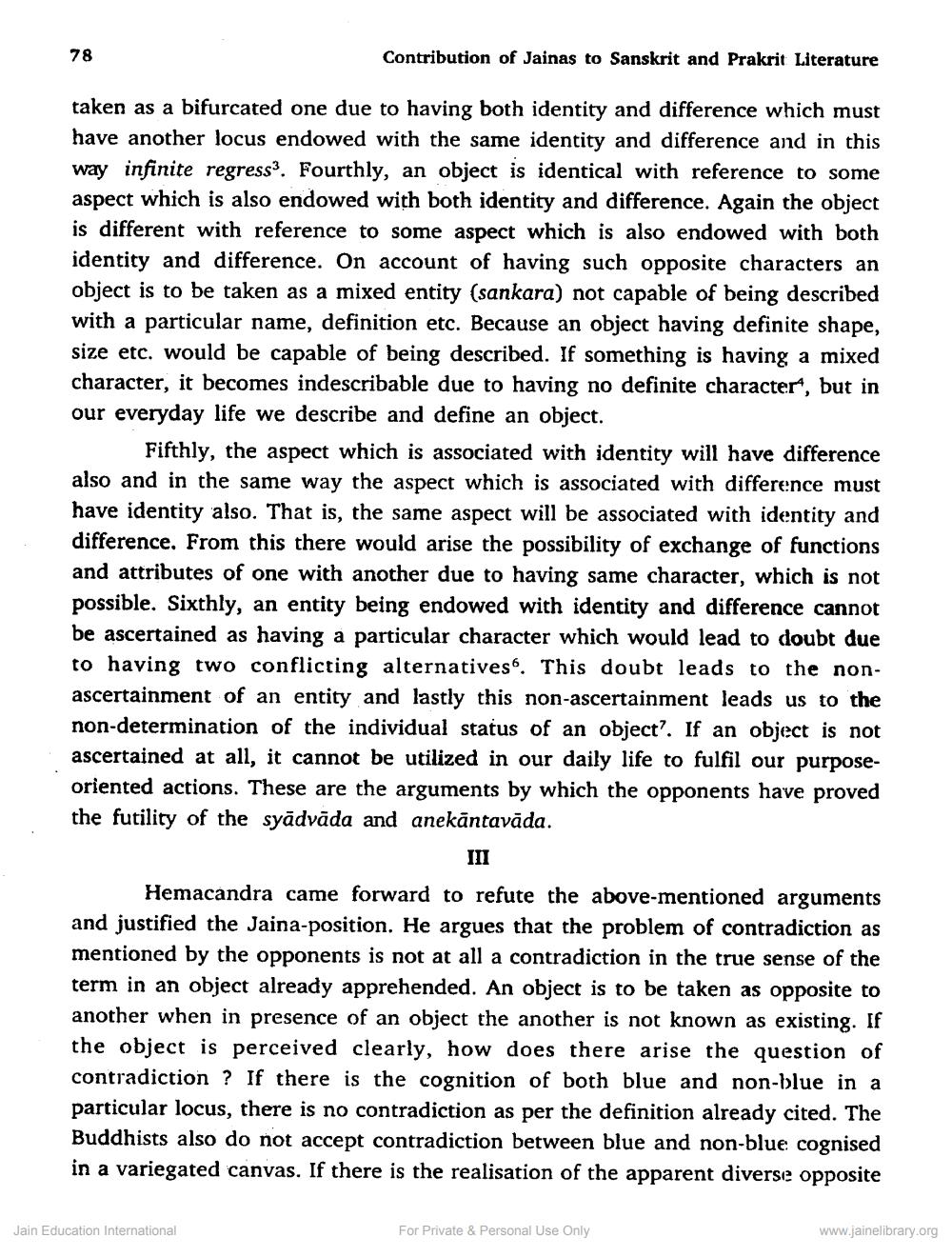________________
78
Contribution of Jainas to Sanskrit and Prakrit Literature
taken as a bifurcated one due to having both identity and difference which must have another locus endowed with the same identity and difference and in this way infinite regress3. Fourthly, an object is identical with reference to some aspect which is also endowed with both identity and difference. Again the object is different with reference to some aspect which is also endowed with both identity and difference. On account of having such opposite characters an object is to be taken as a mixed entity (sankara) not capable of being described with a particular name, definition etc. Because an object having definite shape, size etc. would be capable of being described. If something is having a mixed character, it becomes indescribable due to having no definite character, but in our everyday life we describe and define an object.
Fifthly, the aspect which is associated with identity will have difference also and in the same way the aspect which is associated with difference must have identity also. That is, the same aspect will be associated with identity and difference. From this there would arise the possibility of exchange of functions and attributes of one with another due to having same character, which is not possible. Sixthly, an entity being endowed with identity and difference cannot be ascertained as having a particular character which would lead to doubt due to having two conflicting alternatives. This doubt leads to the nonascertainment of an entity and lastly this non-ascertainment leads us to the non-determination of the individual status of an object?. If an object is not ascertained at all, it cannot be utilized in our daily life to fulfil our purposeoriented actions. These are the arguments by which the opponents have proved the futility of the syādvāda and anekāntavāda.
III Hemacandra came forward to refute the above-mentioned arguments and justified the Jaina-position. He argues that the problem of contradiction as mentioned by the opponents is not at all a contradiction in the true sense of the term in an object already apprehended. An object is to be taken as opposite to another when in presence of an object the another is not known as existing. If the object is perceived clearly, how does there arise the question of contradiction ? If there is the cognition of both blue and non-blue in a particular locus, there is no contradiction as per the definition already cited. The Buddhists also do not accept contradiction between blue and non-blue cognised in a variegated canvas. If there is the realisation of the apparent diverse opposite
Jain Education International
For Private & Personal Use Only
www.jainelibrary.org




